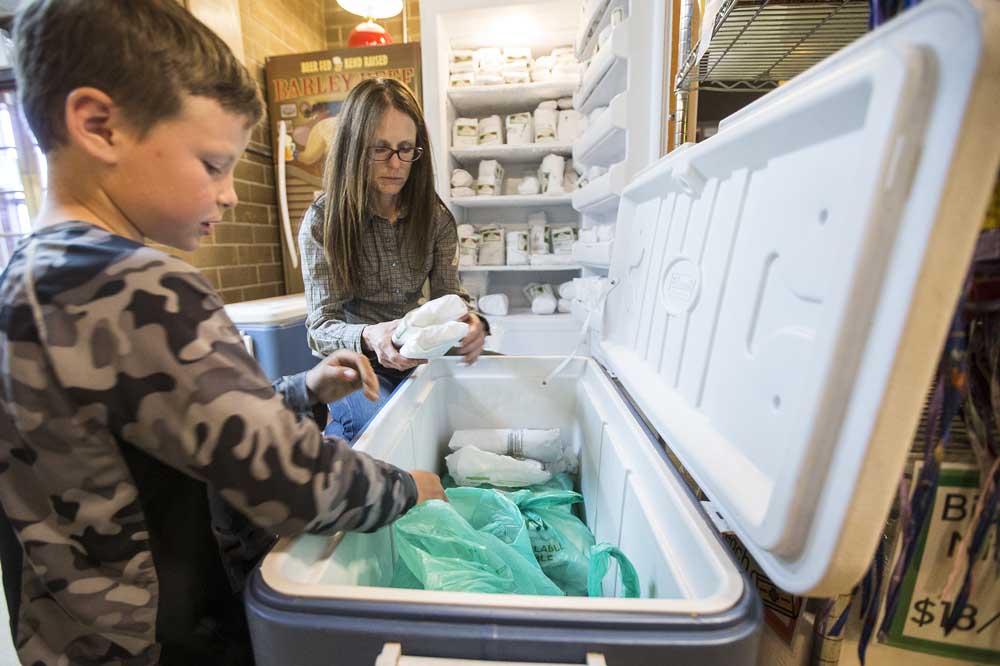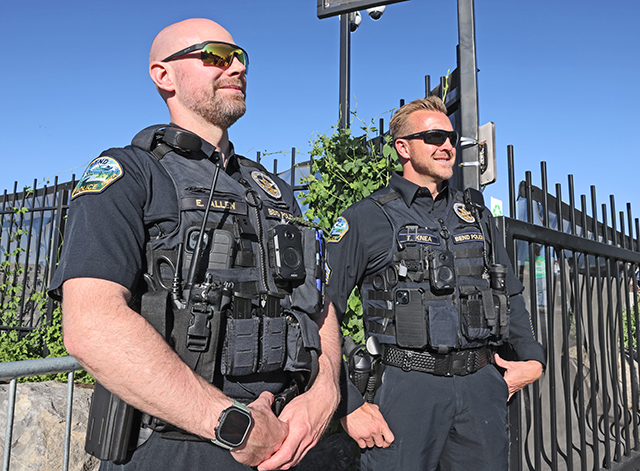Keeping it local at Locavore
Published 2:00 am Thursday, July 9, 2020

- Linda Anspach, owner of DD Ranch, and her son Beck work together on restocking a refrigerator of meat products from their ranch at Locavore in Bend on Friday.
Grocery stores are among the businesses fairing well during the pandemic. These stores are essential in getting food from the makers to our dinner tables, albeit usually with several steps in between. Central Oregon Locavore, however, cuts out the middleman. The nonprofit’s Marketplace is a kind of “indoor farmers market” as their website states. Offering items from hundreds of local vendors including farmers, ranchers, egg producers, artisans, woodworkers, seamstresses, soapmakers and more that are priced and selected by the makers.
Central Oregon Locavore also engages the community to teach them about food.
“We do a ton of programs,” said president and founder of the nonprofit Nicolle Timm-Branch, “(We) take kids out to farms, bring work parties to farms, teach people how to cook.”
In fact, the nonprofit has been getting the community involved with its food in more ways than one since its birth in 2009.
Timm-Branch founded Locavore with the marketplace as strictly an online offering where customers would pick up fresh and locally grown produce, meat and other foods every other week.
“The farmers would deliver in the morning, the customers would pick up in the evening,” she said.
Running alongside the food branch was also the organization’s Willing Workers on Local Farms, a program that organizes a group of volunteers to head out to a Central Oregon farm and help out for the day.
Locavore features several more programs including Food School, Edible Adventure Crew as well as annual events like farm to table dinners and more.
The marketplace is the biggest draw.
Timm-Branch noted that there has been an increase in customers since the March shutdown.
“I think people are more interested in eating healthy and staying healthy at times like this.”
Locavore has also implemented curbside pickup options for at-risk customers.
Memberships, which are vital to any nonprofit, have also increased.
While it is not a requirement to be a member to shop at the Marketplace or take part in any event or program, it does offer some perks such as discounts and ticket pre-sales depending on the membership level.
While there are more customers in the market, many other programs had to be cancelled temporarily. “All of our educational programs and farm to table dinners we did have to cancel this year,” said Timm-Branch.
One of these dinners includes Locavore’s yearly fall fundraiser, which Timm-Branch doesn’t anticipate will happen this year due to COVID-19.
“I think we’ll be OK without it,” she said.
She hopes that next year the festivities will resume.
Locavore is focusing on one fundraising effort: collecting money for a new freezer.
“From the beginning what we’ve been using domestic stand up freezers, and we paint them so they’re cute,” said Timm-Branch, “But… they’re not made for frequent open-close, open-close all day long. So they blow (out).”
Locavore has burned through several units over the years including three just this year. Timm-Branch says that since meat production has been affected by the pandemic, Locavore is getting more meat than before, which means more opening and closing, which means more freezers sent to the landfill.
“That really hurts our heart, it’s everything we’re against,” she said.
As of this writing, the organization is $5,000 from its $30,000 goal of being able to purchase commercial-grade freezer units.
“We do worry about the…rancher’s products. If a freezer goes out right after we leave at night and it’s in there all night and you know — especially with the meat production shortage — it’s just we cannot take that risk.”
Timm-Branch says that within the past month freezers have increased $1,200 per unit, meaning that some of the money that was allocated to improving the electrical will now go to the full price of the freezers.
“I think we’re actually going to come out OK,” she said, “If we can get the full $30,000 we can get the freezers, and you know, plug ‘em in and pray.”
She has confidence that it will work though.
Those interested in selling their goods at the market can apply with a form on Locavore’s website.
Timm-Branch and her team look for “local and sustainable” items to feature.
“We probably wouldn’t sell like plastic toys, but if they were wooden toys we would,” she said.
Locavore is more than just buying and selling local goods, Timm-Branch emphasized. The primary mission it’s about getting involved with your food.
“It’s about being educated and engaged, just a part of the local food community in all sorts of different ways.”






